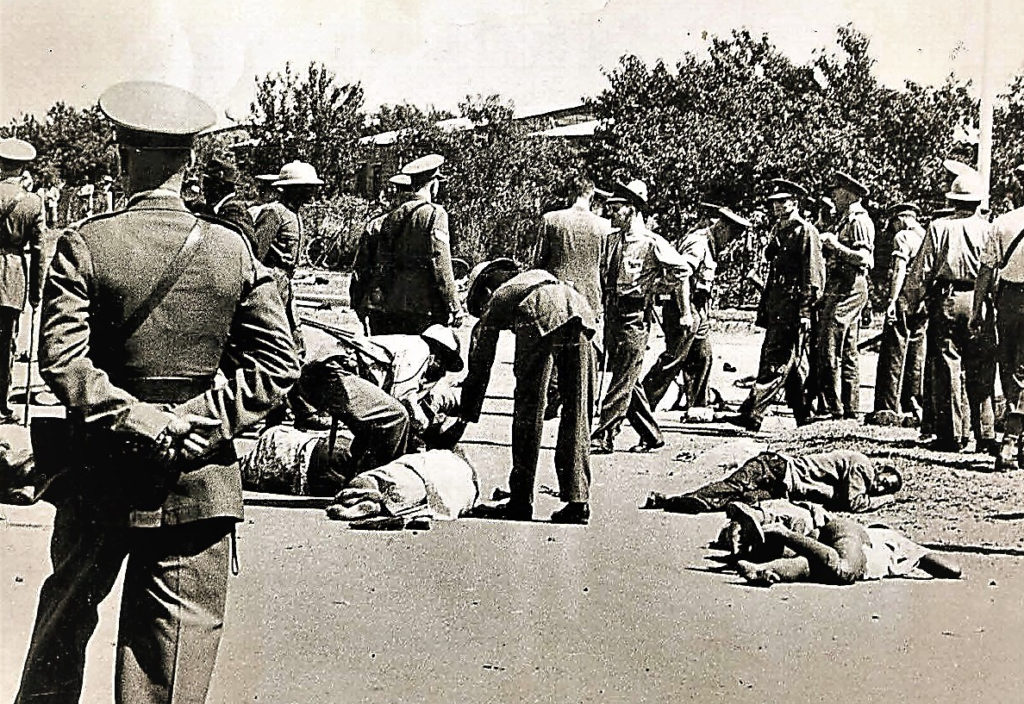This Day in Labor History: August 3, 1959

On August 3, 1959, dock workers in what is today Guinea-Bissau, but was then Portuguese Guinea, went on strike, leaving up to 50 workers dead. Arguably the most important event in the history of Guinea-Bissau, this massacre galvanized the anti-colonial movement and moved it toward the armed struggle that would eventually lead to independence for this small west African nation.
Portuguese colonialism did not lead to the first anti-colonial revolts of the post-war period, but it certainly was as brutal as any other European nation operating in Africa and Asia. Its colony in Guinea gave it a strong foothold in western Africa, bringing back the goods of that continent to Europe. Naturally enough, it did not allow much in the way of African economic agency at all. The Port of Bissau was controlled by the Portuguese company Companhia União Fabril, one of the nation’s largest companies and one that did very well under the fascist government of Salazar. As they were throughout Africa, workers suffered from low wages and poor working conditions.
As early as 1956, the workers at the Pijiguiti docks in Bissau, the colony’s capital city, had struck. The Portuguese were quite worried about anti-colonialism at this time and so didn’t want to create greater problems by suppressing the strike as it might otherwise. So the government ordered the police to back off. The workers tried to take over the docks and the police did push them back, but there were only a few arrests. The police were furious and wanted their revenge over these workers. The workers lost the strike and did not get the wage gains they hoped, but for the cops, that was beside the point. Colonial officials, even up to fairly high ranks, suggested to the government to just pay the demanded wages rather than allow for another strike, again attempting to undermine general revolutionary sentiment against colonization. But the government would not do this.
On August 3, 1959, dockworkers decided to strike in the afternoon, as they were negotiating with the company for higher wages. They wanted to show their power and force the company to cave. The company was furious and it didn’t want anything like in 1956. They wanted to show these Africans, who they did not respect in any way, who was boss. So the company called in the colonial police. And those guys just opened fire. This was all about revenge for the last time. Strikers tried to defend themselves, barricading themselves inside a building with oars and harpoons. But the cops were just too powerful. Worried about the harpoons and whatever other weapons they might have, the police didn’t even bother trying to arrest anyone or ending this semi-peacefully. It just opened fire with high-powered weaponry from afar. They even tossed grenades at groups of workers.
We will never know how many people died in that horrible massacre. The minimum number usually cited is around 25 but most claim it is closer to 50. The Portuguese didn’t care enough to count them. This of course backfired big time on the Portuguese. Guinea-Bissau’s revolutionary group, the Partido Africano para a Independência da Guiné e Cabo Verde (PAIGC), led by Amílcar Cabral, showed up quickly, although I don’t think Cabral was actually at the massacre. They had been working with the dockworkers and helped them plan their strike. The military soon arrested the PAIGC leaders, but now the people of Portuguese Guinea had martyrs and revolutionary heroes. The massacre moved large sectors of the population into supporting the rebels, who would take up armed struggle in 1962 but were more of a political organization in 1959. It was this massacre that moved the PAIGC to realize that nonviolent protest would never work against the colonial government and that armed resistance and guerilla warfare were necessary. So to say the least, this is the most important piece of labor history in the history of Guinea-Bissau.
The Portuguese were a little slow on the uptake on all of this. It didn’t really take the PAIGC that seriously until the 1960s. Big mistake. An 11 year civil war would follow the uptake of armed struggle, leading to independence after the Carnation Revolution in Portugal in 1974. There are three monuments to the dead in Bissau today.
After the massacre, the workers did get a small pay raise. This did not satisfy them.
This is the 402nd post in this series. Previous posts are archived here.


